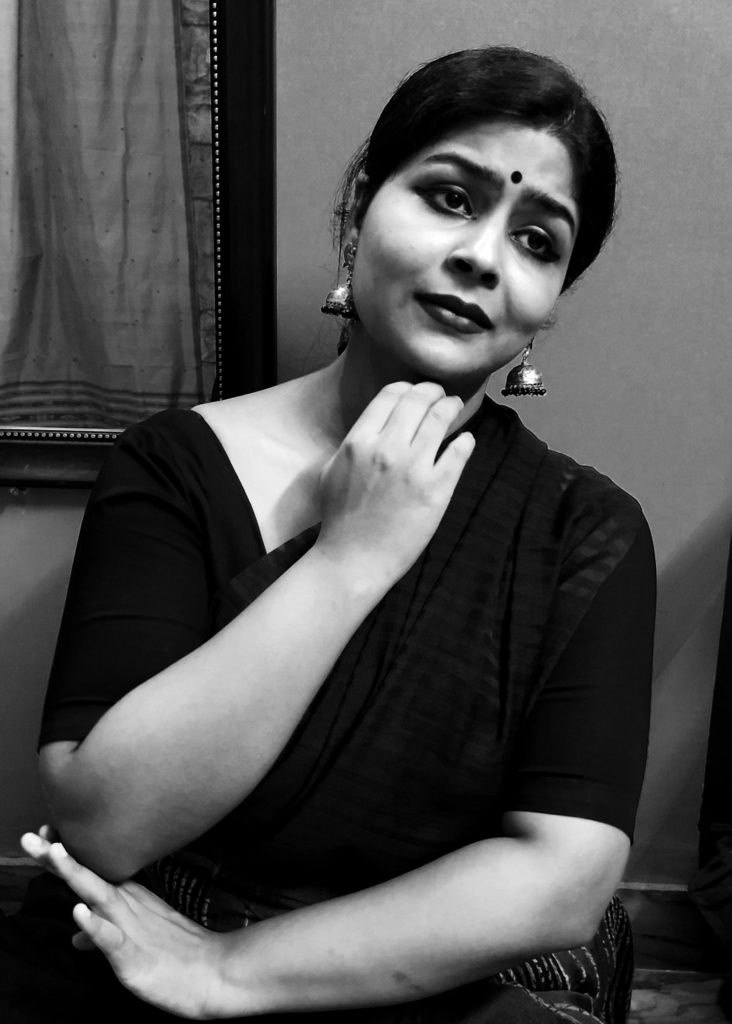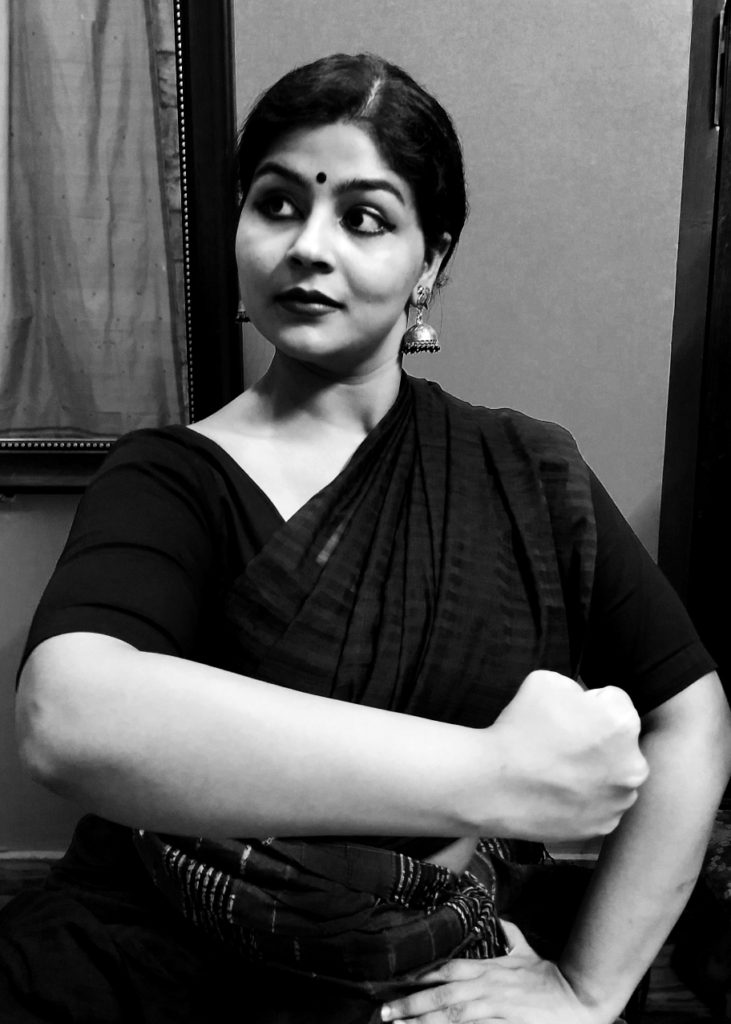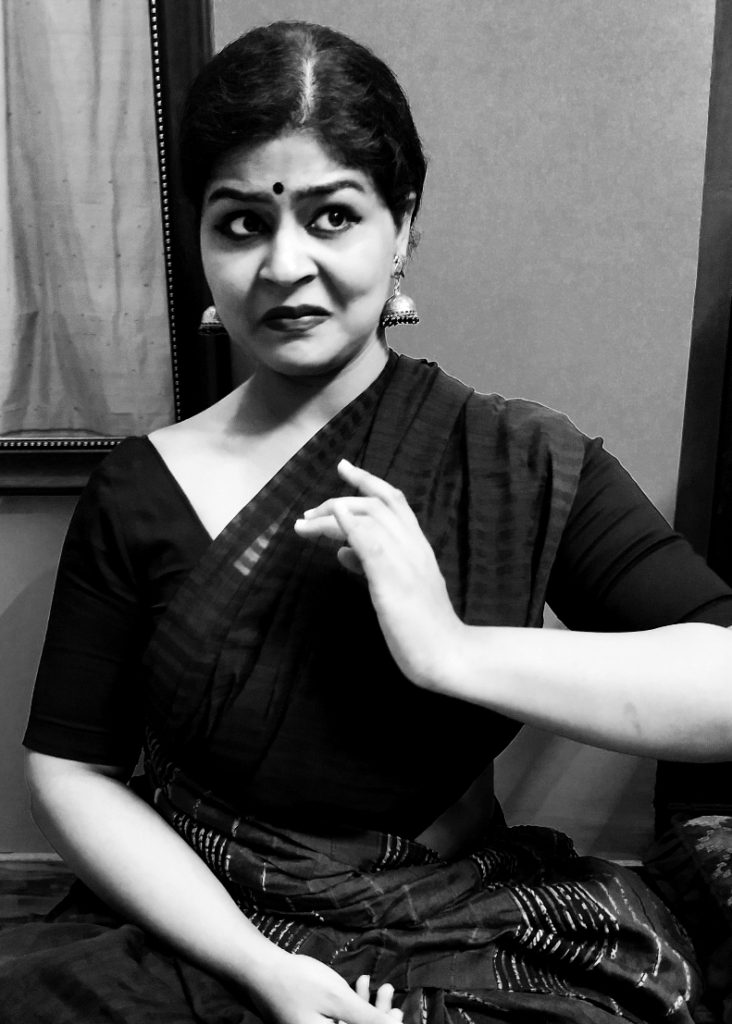Navarasa in Sattriya Dance
The Rasas are the mainstay of Performing Art, which tries to present various phases of human life. The state of rasa is established due to bhava which is the cause of emotion. Every rasa corresponds to a particular bhava and is about human state of mind. Rasa encompasses not just emotions but also the various things that cause that emotion.
The Navarasas give dance completeness. ‘Nava’ means nine and ‘Rasa’ means emotions. The concept of rasa is fundamental to various forms of Indian Classical Dance and Music.
Shringara Rasa (Love)

Shringara is the rasa of love, art, beauty and spiritual devotion. It is the king of all rasas and the one that finds the most frequent portrayal in various art forms. The mood of Shringara has two aspects, the feeling of love in union (Sambhoga Shringara) and in separation (Bipralamba Shringara). The act of Lord Krishna and the gopikas in the Keligopal Naat by Mahapurush Srimanta Sankardev is a true example of Shringara Rasa in Sattriya culture.
Hasya Rasa (Laughter)

Hasya is the rasa of joy with humor as it’s most common expression. Pure Hasya is real happiness, a joy that comes from within. This rasa is used to depict simple happiness or riotous laughter and everything in between. The glimpses of this rasa can be found in the act of Lord Krishna in the Keli Gopal Naat and also in Rukmini Haran Naat written by the Great Vaishnavite Saint.
Karuna Rasa (Sorrow)

The Karuna is a rasa of sadness, grief and compassion. The feeling of tragedy and despair, heartbreak, sorrow caused by parting with a lover, the suffering caused by the death of a loved one are all karuna. While the highest karuna is compassion, the original Sanskrit word Karuna means sadness. The Karuna Rasa was amply used in various Naats by Mahapurush Srimanta Sankardev. In Parijat Haran when Satyabhama heard that Krishna had given the Parijat flower to Rukmini her expressions reflected karuna rasa.
Veera Rasa (Courage)

The Veera is the rasa of heroism, bravery, fearlessness, determination and self- confidence. Boldness in battle, the attitude with which warriors go to war, and the valor with which they die are all aspects of heroism. In the Hindu mythology, Abhimanyu displayed a different type of heroism when he went to war knowing fully that he would be severely outnumbered and almost certainly die and yet fought so bravely till his last. In Sattriya Dance and culture, the Veera Rasa is displayed in various characters in Keli Gopal, Kaliyadaman, Patni Prasad, Parijat Haran, Rukmini Haran, Rambijay, Arjun Bhanjan etc
Raudra Rasa (Anger)

The Raudra Rasa depicts anger and is probably the most violent amongst the other rasas. The wrath of kings, the fury caused by an offense, the anger evoked over injustice and disrespect are all forms of Raudra Rasa. The Raudra Rasa is the integral part in presenting the characters of Kansha, Narashingha, Parashurama, Lord Shiva etc.
Bhayanaka Rasa (Terror)

The Bhayanaka Rasa depicts fear, worries and severe anxiety. Bhayanaka is a feeling evoked while facing something that is more powerful than oneself, it’s a feeling of being helpless. The use of Bhayanaka Rasa can be seen in various creations of Mahapurush Srimanta Sankardev including his maiden poetic creation ‘Karatala Kamala’ mentioning that it is Lord Vishnu who eliminates fear from one’s mind.
Beebhatshya Rasa (Disgust)

Beebhatshya is the rasa of disgust or dissatisfaction with oneself and others. Vulgar and uncivilized acts, using of bad words and manners evokes an unpleasant feeling which is Beebhatshya. The feeling of disgust in the mind of Prince Siddhartha towards sickness, old age and death later transformed him into Buddha which is one of the avatars of Lord Vishnu.
Adbhuta Rasa (Surprise)

Adbhuta is the rasa of curiosity, astonishment and wonder. The feeling when one comes across something divine and supernatural, something never seen or imagined before is Adbhuta. In Sattriya Dance the Adbhuta Rasa can be seen in the expressions of the courtyards when Sri Rama had broken the Hara Dhanu in Sita’s Swayambar. In the ‘Choordhora Naat’ the expression of Yashodha when she saw the whole universe inside the mouth of little Krishna is also an example of Adbhuta Rasa.
Shanta Rasa (Tranquility)

Shanta is the rasa of tranquility and peace. It represents the state of calm and untroubled steadiness. Shanta represents complete harmony between the mind, body and universe. Shanta is what Buddha felt when he was enlightened that led him to salvation or nirvana which freed him from the cycle of life and death.
